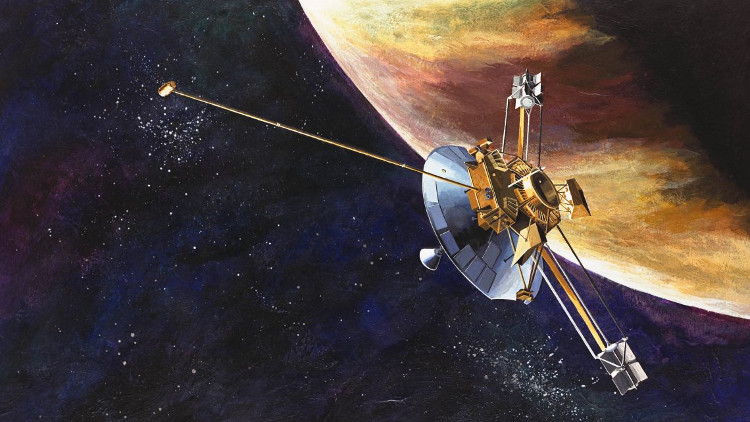It was the 'culprit' that made the ships change their speed when in outer space
What causes the probes to suddenly be reduced or accelerated in a strange way? This is a question that has made scientists "headache" for decades.
Around the middle of the last century, NASA began developing a space exploration program with exploration ships in the Pioneer plan since 1958, the most famous of which was the 11th. But the strange thing was that in 1980, NASA discovered that these two ships suddenly lost speed, but the cause was not found for 30 years.
Then it was the turn of the Juno, Galileo, Near, Cassini and Rosetta vessels to suddenly speed up strangely. In fact, in space, small orbital irregularities can arouse major changes.

NASA's Pioneer 10 ship - the first ship to "visit" Jupiter.(Photo: NASA).
Some astrophysicists explain that there may be a flaw in Einstein's theory of gravitation, and may also be a gateway for a future theory of gravity to be discovered.
But recently, it was discovered that the photons themselves, the light particles produced by the mini nuclear reactors placed in the front, slowed down the speed of the probe.
In the case of NASA, there was a slight acceleration of several millimeters per second each time the path was closer to Jupiter. According to GS. Luis Acedo at Valencia Polytechnic University (Italy), this is not because of the gravity of the Sun, nor because of its radiation pressure, nor because of Jupiter's moons, nor due to magnetic fields, and not because of friction with the atmosphere. So far, NASA has yet to find a reason.
According to Wiliam Folkner, a member of the Juno navigation team, this is a challenge. " We do not know the exact mass distribution within Jupiter, it may be heterogeneous, where there is a lot of carbon, where there is more hydrogen, the gravity of the probe will therefore So, we cannot determine the cause of the irregularity in Juno's trajectory, " Wiliam Folkner added.
In the case of the probes Galileo, Near, Cassini and Rosetta are slightly different, they also accelerated by a few millimeters per second but were in the process of approaching the Earth between 1990 and 2010.
According to Bill Folkner, this is only because the Earth's gravitational field, attached, is a good reason: these probes all use solar panels, which are forever turned toward the Sun. The back of the battery is therefore much colder so it can freeze. And when the probes approached the Earth, sunlight would thaw the panel to create a small pulse that would add a few milliseconds of speed.
- Extreme weather on outer space planets
- Safety limit for people when flying to space
- For the first time, we can see livestream images from outer space
- Finding the culprit made the planet suddenly turn quickly
- Why are astronauts forbidden to drink in outer space?
- The environment in outer space may not affect reproduction
- NASA set up new berths on the space station for visitors
- The dreamlike space colonies replaced Earth
- The culprit turns solid objects into liquid, sinking cargo ships
- China aspires to create genetically modified seeds in outer space
- Why can't trash be dumped into space?
- Secrets of the first walk to space
 Van Allen's belt and evidence that the Apollo 11 mission to the Moon was myth
Van Allen's belt and evidence that the Apollo 11 mission to the Moon was myth The levels of civilization in the universe (Kardashev scale)
The levels of civilization in the universe (Kardashev scale) Today Mars, the sun and the Earth are aligned
Today Mars, the sun and the Earth are aligned The Amazon owner announced a secret plan to build a space base for thousands of people
The Amazon owner announced a secret plan to build a space base for thousands of people